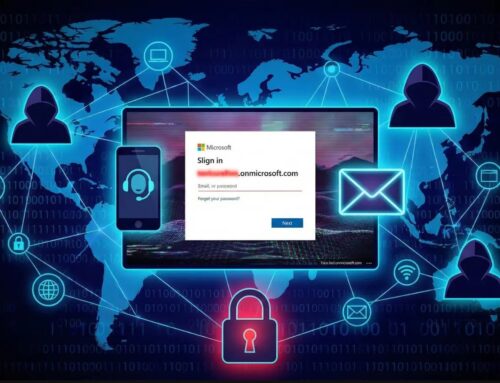
⚡ Weekly Recap — SharePoint Breach, Spyware, IoT Hijacks, DPRK Fraud, Crypto Drains and More
Unmasking the Imposter: When Trust Becomes the Weakest Link in Cybersecurity
In the relentless landscape of cyber threats, the perimeter is often the focus of defensive measures. Yet, as this week’s incidents powerfully illustrate, some of the most insidious risks don’t breach the perimeter; they bypass it entirely. They arrive cloaked in legitimacy – through signed software, clean resumes, or even sanctioned vendors, hiding in plain sight. This past week revealed that the clearest threats weren’t the loudest, but rather the most legitimate-looking. In an environment where identity, trust, and tooling are deeply intertwined, the most effective attack path is frequently the one that appears to belong.
Today, we peel back the layers on a series of unsettling incidents, ranging from critical SharePoint vulnerabilities to sophisticated spyware campaigns, IoT hijacks, and the pervasive fraud operations spearheaded by nation-state actors. Understanding these vectors is crucial for security teams constantly refining their defenses against an adaptive adversary.
SharePoint Breach: A Trusted Platform Under Attack
Microsoft SharePoint, a cornerstone collaboration platform for countless enterprises, faced significant security challenges recently. While specific details sometimes remain under wraps for a period, any compromise of such a widely used system can have cascading effects, exposing sensitive data and disrupting critical business operations. Attackers increasingly target legitimate access points to gain a foothold, turning trusted applications into conduits for malicious activity.
Remediation Actions for SharePoint Security
- Patching and Updates: Immediately apply all security patches and updates released by Microsoft. This is paramount for addressing known vulnerabilities.
- Access Control Review: Regularly audit and restrict user permissions to SharePoint sites and documents based on the principle of least privilege. Implement multi-factor authentication (MFA) for all user accounts.
- Monitoring and Logging: Implement robust logging and monitoring for SharePoint activity, including unusual login attempts, file access patterns, and configuration changes. Utilize security information and event management (SIEM) systems to detect anomalies.
- External Sharing Policies: Configure and enforce strict policies around external sharing of SharePoint content to prevent unauthorized data exfiltration.
- Security Baselines: Follow Microsoft’s recommended security baselines for SharePoint deployments.
The Pervasive Threat of Spyware: Covert Surveillance at Scale
Spyware continues to evolve, becoming more sophisticated and difficult to detect. These insidious tools often leverage zero-day exploits or social engineering tactics to gain access to devices, quietly siphoning off sensitive information. The latest incidents highlight how nation-states and malicious actors are deploying these tools for targeted surveillance, intellectual property theft, and even political espionage. The concern isn’t just about data loss, but the complete compromise of privacy and operational integrity.
IoT Hijacks: The Expanding Attack Surface of Connected Devices
The proliferation of Internet of Things (IoT) devices introduces a vast and often unsecure attack surface. From smart home gadgets to industrial control systems, compromised IoT devices can serve as entry points into networks, participate in massive botnets, or even facilitate physical disruption. Recent hijacks underscore the critical need for security-by-design in IoT, pushing beyond default credentials and into robust authentication and network segmentation.
DPRK Fraud Operations: A Nation-State’s Illicit Funding Machine
The Democratic People’s Republic of Korea (DPRK) has long funded its illicit programs through elaborate cyber operations, including cryptocurrency theft, ransomware attacks, and sophisticated fraud schemes. These operations are not merely criminal; they are state-sponsored economic warfare. The detailed reports on their methods reveal a persistent, global effort to exploit digital vulnerabilities and human trust to circumvent sanctions and generate revenue. This highlights the complex nexus between cybercrime and international geopolitics.
Crypto Drains: The Vulnerability of Digital Assets
The cryptocurrency ecosystem, despite its promises of decentralization and security, remains a high-value target for attackers. “Crypto drains” refer to sophisticated phishing or malware attacks designed to empty cryptocurrency wallets. These often involve highly convincing fake websites, malicious smart contracts, or social engineering techniques that trick users into revealing their seed phrases or private keys. The immutable nature of blockchain transactions means that once drained, funds are almost impossible to recover.
The Deceptive Nature of Trust: A Key Takeaway
The incidents of the past week underscore a pivotal shift in the threat landscape: the most effective attacks often don’t loudly announce their presence through obvious perimeter breaches. Instead, they leverage trust itself – the trust placed in legitimate software, vetted individuals, or standard operating procedures. Security teams are increasingly confronted with adversaries who understand that identity, accepted tooling, and established workflows can be weaponized. Focusing solely on external threats while neglecting the internal vectors of compromise is a dangerous oversight.
Mitigation Strategies: Building Resilient Defenses
Protecting against these sophisticated threats requires a multi-layered, proactive approach:
- Zero Trust Architecture: Assume no user, device, or application is inherently trustworthy, regardless of its location. Verify everything, continuously.
- Robust Identity and Access Management (IAM): Implement strong authentication mechanisms, including MFA, and rigorously enforce the principle of least privilege.
- Software Supply Chain Security: Vet all third-party software, libraries, and vendors. Implement code signing validation and conduct regular security audits of dependencies.
- Endpoint Detection and Response (EDR) / Extended Detection and Response (XDR): Deploy advanced solutions that can detect and respond to suspicious activities at the endpoint and across the entire IT environment.
- Threat Intelligence Integration: Stay abreast of the latest threat intelligence, especially regarding nation-state activities and emerging attack vectors.
- Security Awareness Training: Continuously educate employees on phishing, social engineering, and the importance of reporting suspicious activities.
- Regular Penetration Testing and Vulnerability Assessments: Proactively identify and remediate weaknesses in your systems and applications.
- Network Segmentation: Isolate critical systems and sensitive data to limit the lateral movement of attackers in the event of a breach.
Concluding Thoughts
The digital defense paradigm is shifting. While external fortifications remain essential, the focus must broaden to encompass the increasingly effective techniques that leverage trust and legitimate pathways to compromise. The SharePoint breach, pervasive spyware, IoT hijacks, DPRK’s intricate fraud, and crypto drains all serve as stark reminders that the most dangerous threats are often the ones that blend seamlessly into the environment. By fostering a culture of continuous verification and adopting a proactive, ‘assume breach’ mindset, organizations can significantly enhance their resilience against these evolving and deceptive cyber adversaries.





